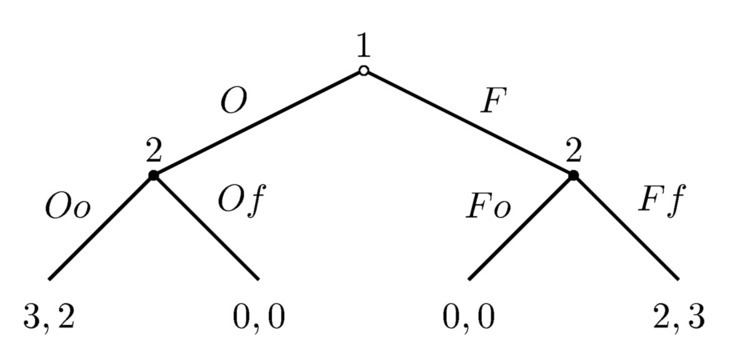 | ||
In game theory, an information set is a set that, for a particular player, establishes all the possible moves that could have taken place in the game so far, given what that player has observed. If the game has perfect information, every information set contains only one member, namely the point actually reached at that stage of the game. Otherwise, it is the case that some players cannot be sure exactly what has taken place so far in the game and what their position is.
More specifically, in the extensive form, an information set is a set of decision nodes such that:
- Every node in the set belongs to one player.
- When play reaches the information set, the player with the move cannot differentiate between nodes within the information set, i.e. if the information set contains more than one node, the player to whom that set belongs does not know which node in the set has been reached.
The notion of information set was introduced by John von Neumann, motivated by studying the game of Poker.
Example
At the right are two versions of the battle of the sexes game, shown in extensive form.
The first game is simply sequential-when player 2 has the chance to move, he or she is aware of whether player 1 has chosen O(pera) or F(ootball).
The second game is also sequential, but the dotted line shows player 2's information set. This is the common way to show that when player 2 moves, he or she is not aware of what player 1 did.
This difference also leads to different predictions for the two games. In the first game, player 1 has the upper hand. They know that they can choose O(pera) safely because once player 2 knows that player 1 has chosen opera, player 2 would rather go along for o(pera) and get 2 than choose f(ootball) and get 0. Formally, that's applying subgame perfection to solve the game.
In the second game, player 2 can't observe what player 1 did, so it might as well be a simultaneous game. So subgame perfection doesn't get us anything that Nash equilibrium can't get us, and we have the standard 3 possible equilibria:
- Both choose opera;
- both choose football;
- or both use a mixed strategy, with player 1 choosing O(pera) 3/5 of the time, and player 2 choosing f(ootball) 3/5 of the time.
